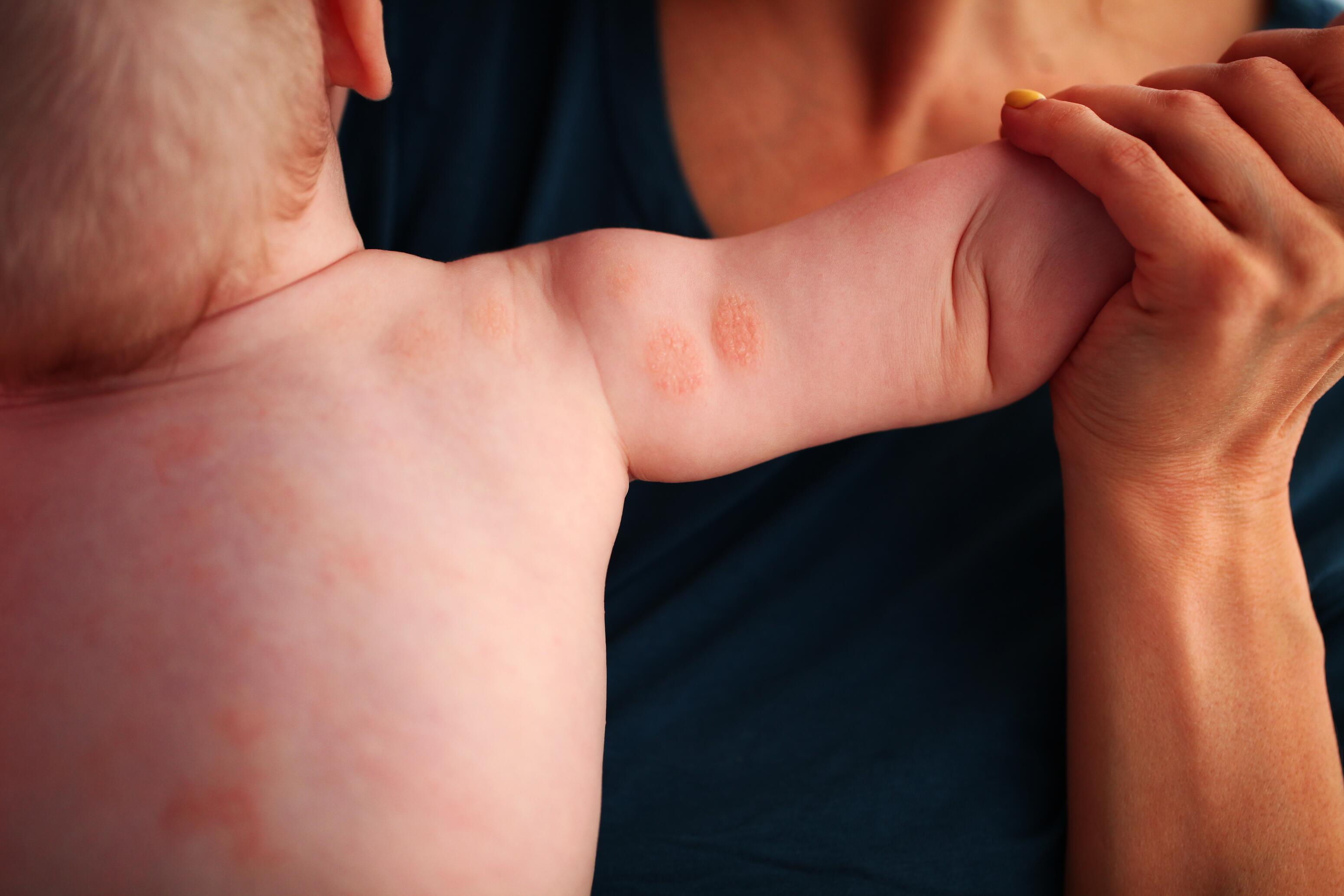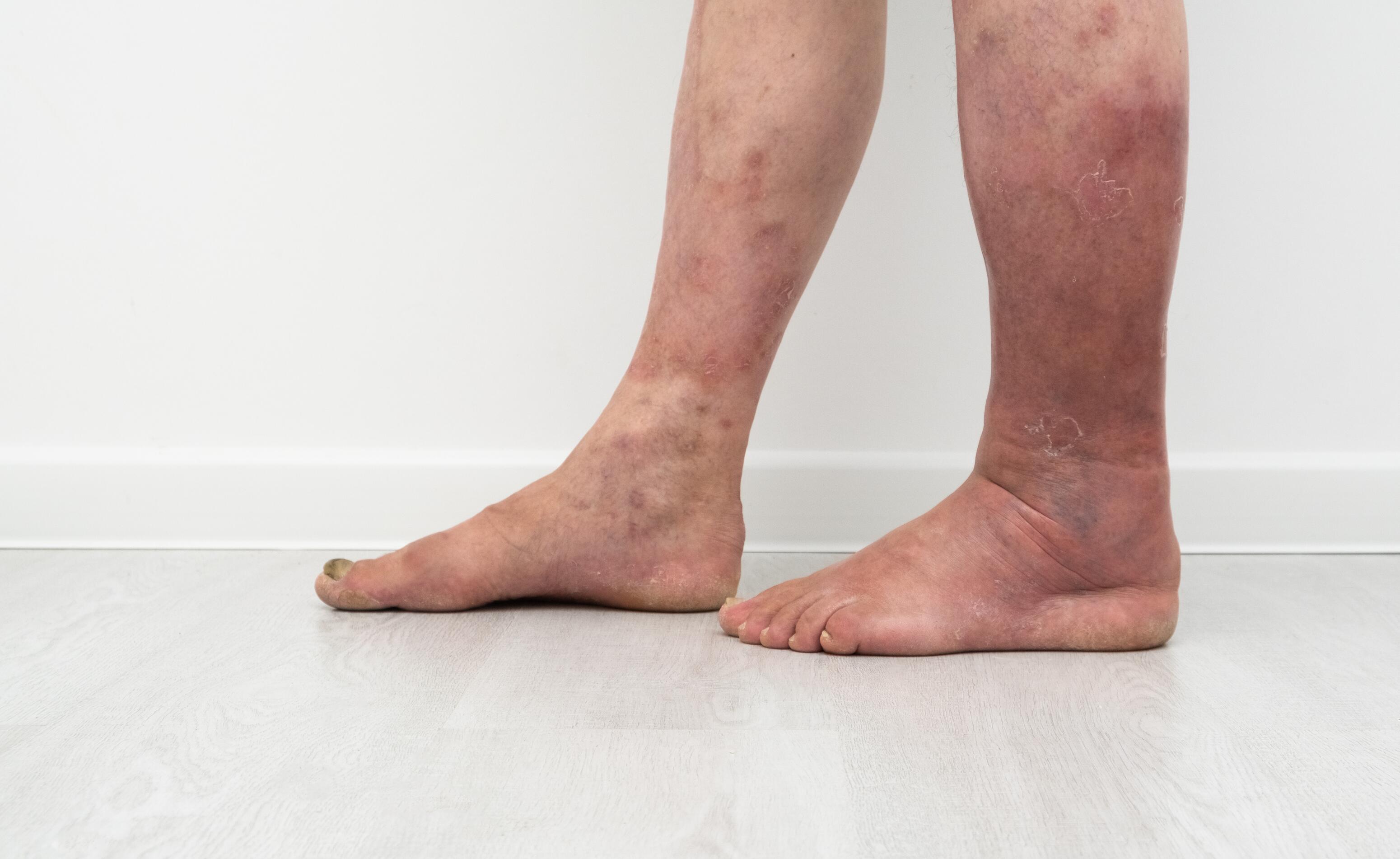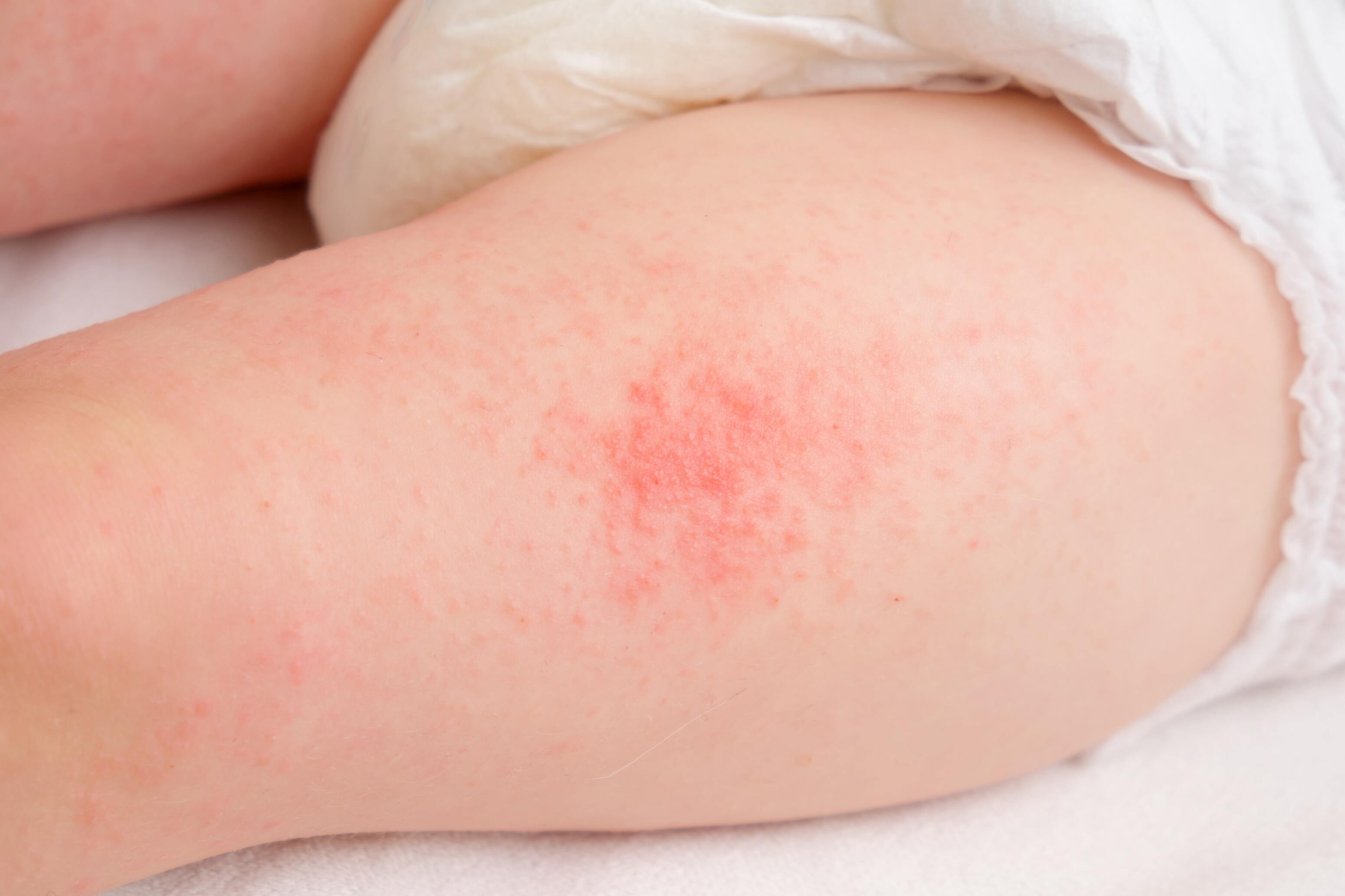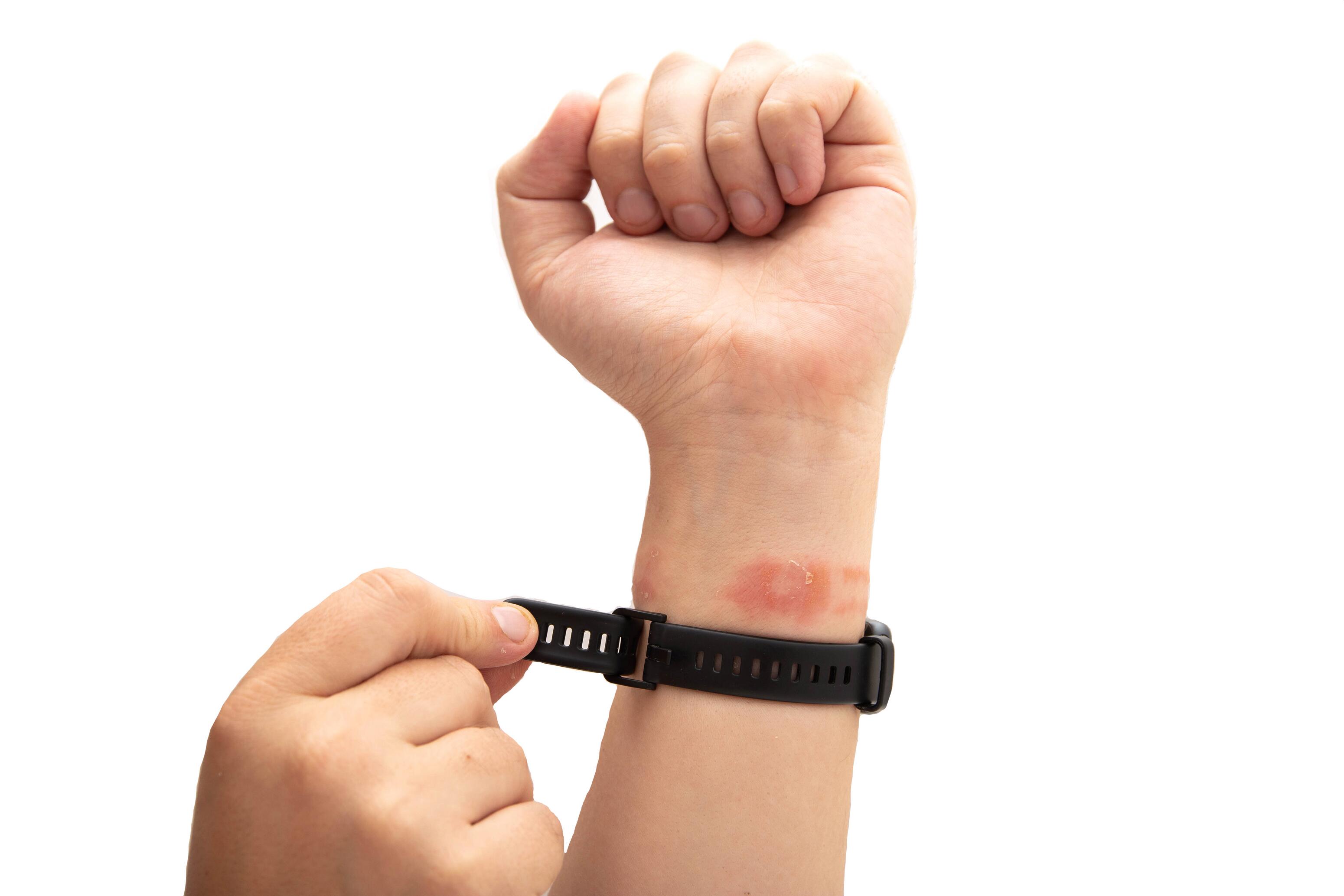Is Eczema Contagious? Myths, Truths & Advice
Explore the truth behind eczema and contagiousness: causes, symptoms, treatments, and preventive measures. A guide to understanding and effectively managing eczema.
What is Eczema ?¹
Eczema refers to a group of inflammatory skin conditions characterized by dry skin, itching, and typical lesions (red patches, blisters, oozing, scales, crusts).
In everyday language, the term "eczema" most often refers to atopic eczema, the most common type of eczema.
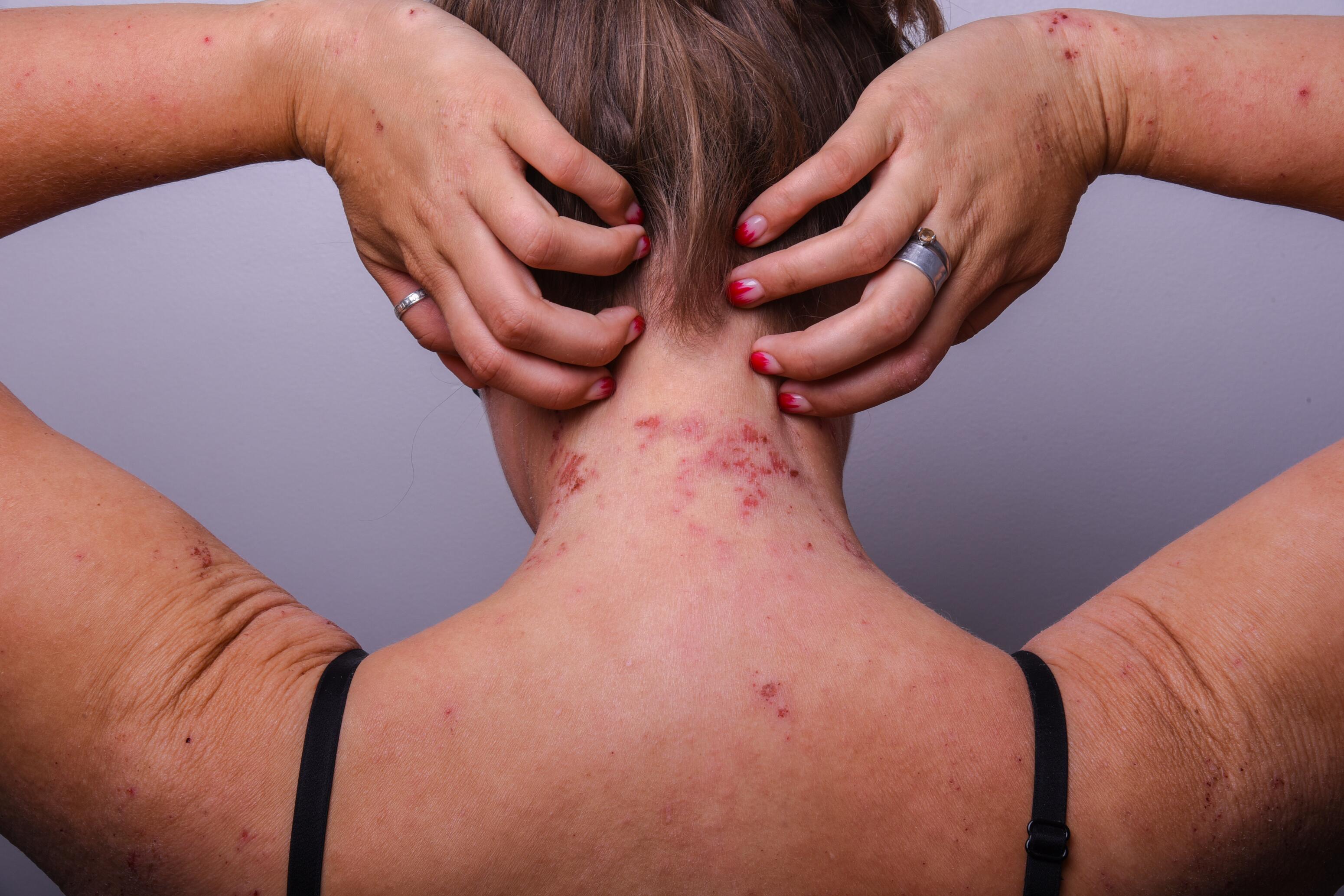
Atopic Dermatitis1 2
Atopic dermatitis, or atopic eczema, is characterised by successive phases of flare-ups and remissions of typical eczema symptoms. It is primarily a childhood disease that usually begins in the first months of life and disappears during growth. It often occurs in a family with a history of atopy and can be associated with other allergic diseases like asthma and allergic rhinitis.
Other Types of Eczema
Among other types of eczema, we find:
- Contact eczema is triggered by an irritant or allergen in direct contact with the skin.
- Dyshidrosis is characterised by blisters and vesicles, mainly on the hands.
- Nummular eczema, which manifests as round lesions resembling coins.
- Varicose eczema of the legs is generally linked to chronic venous insufficiency.
Other types of eczema
Dyshidrosis
Nummular eczema
Varicose eczema
Eczema symptoms1
The symptoms of eczema are characterised by:
- Dry skin.
- Itching.
- Skin lesions that vary according to the type, stage, and location of eczema as well as the age of the person: swollen and irritated red patches, blisters, oozing, crusts, thickening, and changes in skin colour (lichenification), cracks, sores.
Diagnosis of Eczema1
The diagnosis of eczema is clinical; the doctor collects the patient's medical history and examines the entire skin.
Patch tests can confirm the diagnosis of allergic contact dermatitis. Other tests (searches for specific IgE, skin biopsies, leg doppler ultrasound) are rarely indicated.
Is Eczema Contagious? Myths and Realities¹ ²
Demystifying Misconceptions About Eczema's Contagion
Eczema is a common skin condition surrounded by many misconceptions, especially regarding its contagiousness. Sorting out myth from reality is essential: no, eczema is not contagious.
Eczema is not an infectious disease but an inflammatory one. It does not spread through physical contact or by contaminated objects. Understanding the true nature of eczema is crucial to reducing the stigma and misunderstandings surrounding this condition.
However, eczema transmission can be hereditary. In cases of atopic dermatitis, parents can pass on genetic mutations responsible for the disease to their children.
The True Causes of Eczema
The causes of eczema are multifactorial and complex.
Genetic and Hereditary Causes¹
This inflammatory disease can have genetic causes at the root of eczema's hereditary transmission. A mutation in the filaggrin gene, a protein essential for the integrity of the epidermis, is particularly common in atopic dermatitis. Without filaggrin, the skin's structure is altered; it retains water poorly, becoming dry and more permeable to environmental factors, irritants, or allergens. Dysfunctions in the immune system lead to an excessive allergic reaction to these substances, responsible for the skin symptoms of eczema.

Environmental Factors¹
Multiple environmental factors can trigger or worsen eczema:
- Airborne allergens (pollens, dust mites, animal fur) and pollutants.
- Climatic conditions (dry or overly moist environments).
- Inappropriate hygiene habits (too frequent or hot showers, irritating cosmetic products).
- Irritants (chemicals, soaps, perfumes, detergents, textiles)
- Food allergens (peanuts, shellfish, eggs), particularly in infant eczema.

Contagious Complications of Eczema
While there is no direct transmission of eczema, some of eczema's complications are contagious.
Bacterial Infections1 3
Due to the "porosity" of the skin, eczema facilitates bacterial skin infections like impetigo, often caused by Staphylococcus aureus or Streptococcus. These infections present a risk of transmission through direct contact.
Viral Infections1 3
Eczema can facilitate viral infections such as eczema herpeticum, a potentially severe disease caused by the herpes virus. These infections can be contagious and require urgent treatment.
Fungal Infections3
Skin alterations can increase vulnerability to fungal infections, such as dermatophytes and candidiasis, which can be contagious through significant contact or via contaminated objects.
Which Skin Diseases Resembling Eczema Are Contagious ?
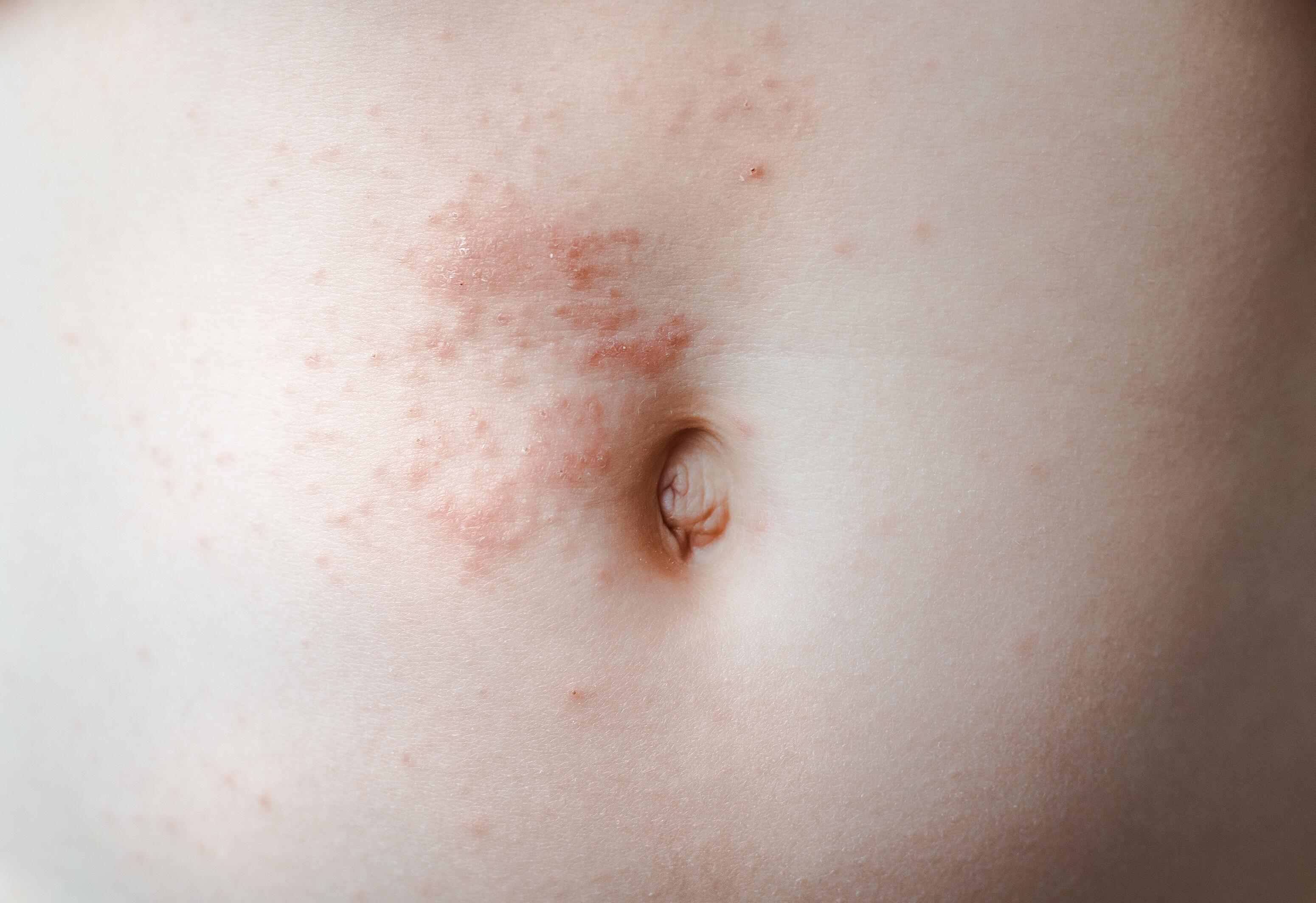
Scabies3
Scabies, caused by the mite Sarcoptes scabiei, can mimic eczema symptoms with intense itching and rash. However, its locations are different, and doctors can identify specific lesions (scabies burrows). It is highly contagious through direct contact.
Fungal Infections3
Candidiasis and dermatophytes sometimes manifest with bumps and itching that can be confused with eczema. They generally affect the folds (groin, between the toes) and present a moderate risk of transmission, mainly through contaminated objects.

What are the Treatments for Eczema ?
Local Care and Hydration1 4
Local care is essential for skin health in treating eczema. The application of emollients several times a day can moisturize the skin, soothe itching, and prevent flare-ups. By restoring the quality of the skin barrier, emollients help reduce the penetration of bacteria (such as staphylococci), which is a source of skin infections.
Topical Treatments1 4
Corticosteroids are the treatment for eczema flare-ups. In some cases, doctors may prescribe topical calcineurin inhibitors.
Exceptional Treatments1 4
Phototherapy and specific systemic treatments are indicated in severe and resistant eczemas.
Treatments for Contagious Complications of Eczema3 4
In the case of bacterial superinfection, doctors will recommend local antiseptic treatment. Oral antibiotics are reserved for severe and extensive infections.
Eczema herpeticum is a severe complication that requires urgent antiviral treatment.
Practical Advice for Managing Eczema Daily¹ ⁴
Some daily management measures are essential for preventing eczema. Follow these practical tips:
- Eliminate environmental eczema factors (dust mites in carpets, animal fur).
- Take short showers or baths with lukewarm water, and use mild cleansers.
- Dry yourself by dabbing without rubbing.
- Apply an emollient at least twice a day to maintain your skin's health.
- Increase the use of emollients in winter when the weather is cold and dry.
- Wear clothing made from natural fibers (cotton, linen). Avoid wearing wool and synthetic fabrics.
- At home, maintain a comfortable humidity and a cool temperature.
- Wear gloves when using irritating products.
- In the case of contact eczema, remove the incriminating allergen or protect your skin.
Tips to prevent flare-ups
Environmental factors
Skin moisturising
Pat your skin dry
Natural fibre clothing
Manage temperature and humidity at home
Wear gloves when using irritating products
Preventing Contagious Complications of Eczema¹ ⁴
While eczema itself is not contagious, it makes the skin more vulnerable to infections. To prevent these complications, keep your skin clean and moisturized daily and avoid scratching the lesions. Keep your nails cut short. If you notice signs of infection (redness, swelling, warmth, oozing), consult a doctor.
References:
1. Nemeth V, Evans J. Eczema. In: StatPearls. Treasure Island (FL): StatPearls Publishing; 2023 Jan. [Disponible sur :] https://www.ncbi.nlm.nih.gov/books/NBK538209/
2. Kolb L, Ferrer-Bruker SJ. Atopic Dermatitis. In: StatPearls. Treasure Island (FL): StatPearls Publishing; 2023 Jan. [Disponible sur :] https://www.ncbi.nlm.nih.gov/books/NBK448071/
3. Siegfried EC, Hebert AA. Diagnosis of Atopic Dermatitis: Mimics, Overlaps, and Complications. J Clin Med. 2015 May 6;4(5):884-917.
4. Wollenberg A and al. Consensus-based European guidelines for treatment of atopic eczema (atopic dermatitis) in adults and children: part II. J Eur Acad Dermatol Venereol. 2018 Jun;32(6):850-878.
FAQ
Atopic dermatitis is not contagious. Eczema or atopic dermatitis is the result of immunological dysfunction and damage to the skin barrier. There is a hereditary component. Between 50% and 70% of people with atopic dermatitis have a first-degree relative who is also affected. This risk rises to 80% when both parents are affected. Other common triggers such as stress, irritating products and clothing, and changes in temperature can also explain the onset of atopic dermatitis.
- Discover "Dry Eczema": Hydrating Treatments & Practical Advice
"Dry Eczema": Hydrating Treatments & Practical Advice
- Discover Eczema and urticaria: Identifying and Managing Them Successfully
Eczema and urticaria: Identifying and Managing Them Successfully
- Discover Eczema Spots: How to Identify, Treat, and Prevent Them?
Eczema Spots: How to Identify, Treat, and Prevent Them?
- Discover Allergic or Irritative Contact Dermatitis: Everything You Need to Know
Allergic or Irritative Contact Dermatitis: Everything You Need to Know



